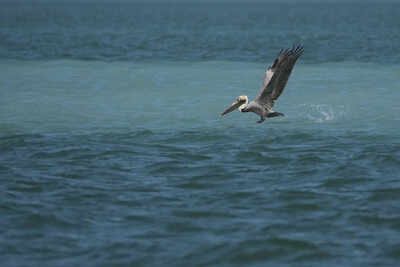SpaceX Polar Tour Ends with Historic Splashdown in the Pacific
CAPE CANAVERAL, Fla. (AP) — In a remarkable achievement for private space travel, four adventurous tourists have successfully completed a historic journey that took them to orbit the North and South Poles. The group made their return to Earth on Friday, splashing down in the tranquil waters of the Pacific Ocean, thus marking the conclusion of their privately funded polar expedition.
This remarkable journey was orchestrated by Bitcoin investor Chun Wang, who chartered a SpaceX flight for himself and three companions. The spacecraft, a Dragon capsule, was uniquely equipped with a domed window designed to offer breathtaking 360-degree views of the polar ice caps and the striking landscapes that lay beneath. Wang, whose financial backing made this extraordinary adventure possible, opted not to disclose the exact cost of the 3 and a half-day voyage.
The intrepid quartet launched from NASA’s Kennedy Space Center on Monday evening, beginning their orbital journey that would be the first human spaceflight to circumnavigate the globe above the poles. Upon their return, they landed off the coast of Southern California, achieving a remarkable milestone as the first crew to splash down in the Pacific Ocean in 50 years.
Among the space tourists was Chun Wang, who, despite being born in China, now holds citizenship in Malta. He was joined by Jannicke Mikkelsen, a Norwegian filmmaker, Rabea Rogge, a German robotics researcher, and Eric Philips, an Australian polar guide. The crew collectively documented their breathtaking views and experiences during the voyage, sharing glimpses of their adventures with the world.
One of the crew members, Rabea Rogge, expressed her awe at the beauty of the polar regions, stating in a video shared by Wang on X, “It is so epic because it is another kind of desert, so it just goes on and on and on all the way.” Her enthusiasm was palpable as she described the endless vistas visible from their vantage point in space.
Jannicke Mikkelsen made the most of the unique opportunity, bringing an array of camera equipment along to capture the stunning views, spending considerable time filming the majestic landscapes below. However, like many first-time space travelers, all four experienced space motion sickness shortly after reaching orbit. Fortunately, by the start of their second day, they had acclimatized and were able to admire the breathtaking views once again, including pulling back the window cover to gaze down at the South Pole.
In addition to enjoying the panoramic views of the poles from an altitude of 270 miles (430 kilometers), Wang and his team also conducted groundbreaking scientific research. They became the first to perform medical X-rays in space, contributing valuable data to ongoing research, and carried out over two dozen other scientific experiments during their journey. They aptly named their mission Fram2, paying homage to the Norwegian sailing ship that historically transported explorers to the poles over a century ago. Notably, a piece of the original ship’s wooden deck accompanied them on this journey, adding a historical touch to their adventure.
SpaceX disclosed that the decision to change their splashdown site from Florida to the Pacific Ocean was driven by safety considerations. The company stated that this new approach would ensure that any remaining pieces of the trunk, which is jettisoned near the end of the flight, would safely fall into the ocean, thus minimizing risks.
The previous crew to return from space via a Pacific splashdown were three NASA astronauts who participated in the 1975 Apollo-Soyuz mission, marking an era that has finally found its way back with this pioneering expedition.
___
The Associated Press Health and Science Department receives support from the Howard Hughes Medical Institute’s Science and Educational Media Group and the Robert Wood Johnson Foundation. The AP is solely responsible for all content.



























